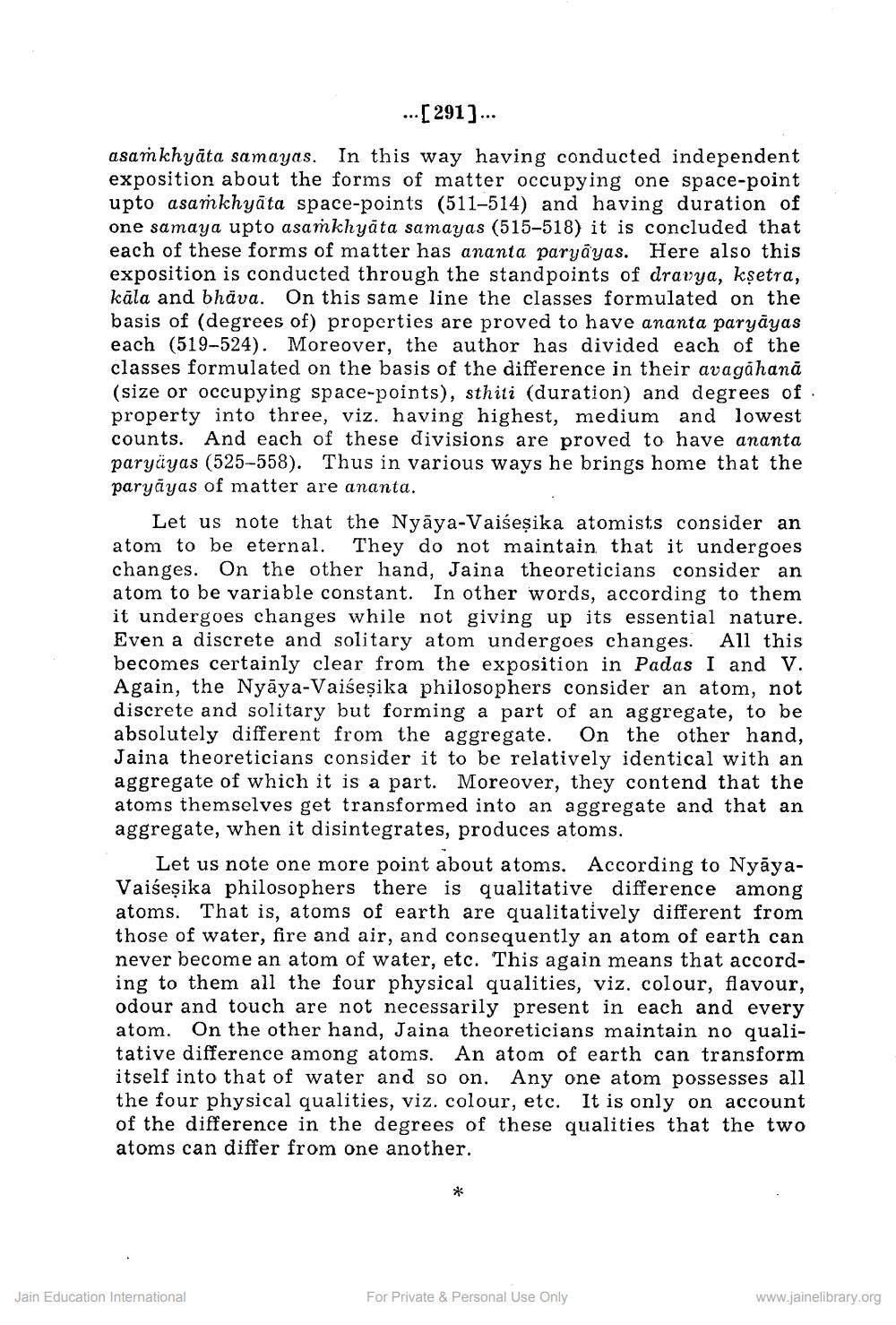________________
...[291]...
asamkhyāta samayas. In this way having conducted independent exposition about the forms of matter occupying one space-point upto asamkhyāta space-points (511-514) and having duration of one samaya upto asamkhyāta samayas (515-518) it is concluded that each of these forms of matter has ananta paryāyas. Here also this exposition is conducted through the standpoints of dravya, kşetra, kāla and bhäva. On this same line the classes formulated on the basis of (degrees of) properties are proved to have ananta paryāyas each (519-524). Moreover, the author has divided each of the classes formulated on the basis of the difference in their avagahanā (size or occupying space-points), sthiti (duration) and degrees of property into three, viz. having highest, medium and lowest counts. And each of these divisions are proved to have ananta paryüyas (525-558). Thus in various ways he brings home that the paryayas of matter are ananta.
Let us note that the Nyāya-Vaiseșika atomists consider an atom to be eternal. They do not maintain that it undergoes changes. On the other hand, Jaina theoreticians consider an atom to be variable constant. In other words, according to them it undergoes changes while not giving up its essential nature. Even a discrete and solitary atom undergoes changes. All this becomes certainly clear from the exposition in Padas I and V. Again, the Nyāya-Vaiseșika philosophers consider an atom, not discrete and solitary but forming a part of an aggregate, to be absolutely different from the aggregate. On the other hand, Jaina theoreticians consider it to be relatively identical with an aggregate of which it is a part. Moreover, they contend that the atoms themselves get transformed into an aggregate and that an aggregate, when it disintegrates, produces atoms.
Let us note one more point about atoms. According to NyāyaVaiseșika philosophers there is qualitative difference among atoms. That is, atoms of earth are qualitatively different from those of water, fire and air, and consequently an atom of earth can never become an atom of water, etc. This again means that according to them all the four physical qualities, viz, colour, flavour, odour and touch are not necessarily present in each and every atom. On the other hand, Jaina theoreticians maintain no qualitative difference among atoms. An atom of earth can transform itself into that of water and so on. Any one atom possesses all the four physical qualities, viz. colour, etc. It is only on account of the difference in the degrees of these qualities that the two atoms can differ from one another.
Jain Education International
For Private & Personal Use Only
www.jainelibrary.org




